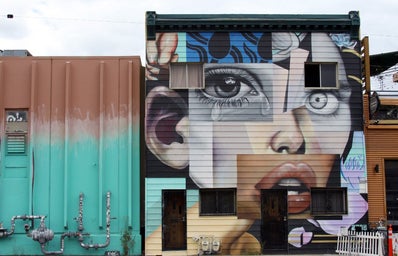When it comes to Spring break vacation, there are two types of people: the planners and the followers. While I consider myself a well-traveled individual, fully capable of orchestrating trips, I must admit I am of the latter. So, when my friends proposed we go to Oaxaca City for Spring break this year, I said yes with no expectations, but also with absolutely no knowledge of the city or its culture.
Within the colorful streets of Oaxaca, where buildings are plastered in intricately detailed artwork, I was met with a cultural experience different from anything I had ever encountered. The more I walked, the more I saw, and the more I understood about the city. Bold street art seemed to scream at me wherever I turned, with phrases such as “Mi lucha es por vivir” (my fight is to live) and “El bosque no se vende se ama y se defiende” (the forest is not for sale, it loves and defends itself).
Street art has long been used as a revolutionary tactic in Mexico, however, the explosion of revolutionary street art in Oaxaca city was sparked in 2006 after police violently broke up a protest in which teachers were negotiating for increased wages and better school supplies.
Following this violent event came the birth of many collectives of artists who combine their artistic talents to empower, educate, and speak out about injustice. These collectives continue to revolutionize artwork today such as the Asamblea de Artistas Revolucionarios de Oaxaca (ASARO), a contemporary collective made up of young art students and street artists. Using popular imagery depicting indigenous symbolism, revolutionary heroes, and villainous politicians, ASARO explains that their art is “an instrument to support the struggles of [their] people”.
Collectives and artists like ASARO also seek to influence and educate those outside of the community. As Oaxaca City is one of Mexico’s premier tourist destinations, street art acts as a way to inform tourists of important topics that may not be included within the international media.By simply walking the streets of Oaxaca and experiencing the artwork for myself, I became more aware and informed about the reality of Oaxaca’s political and social environment.
Inspired by the passion and emotion painted across the walls, I felt a sense of connection to the city. The art was incredibly human, incredibly raw; each piece, in its own way, attempted to push past social norms and challenge the hierarchy, calling on humanity to take a step back from the day-to-day life and face our societal issues.


